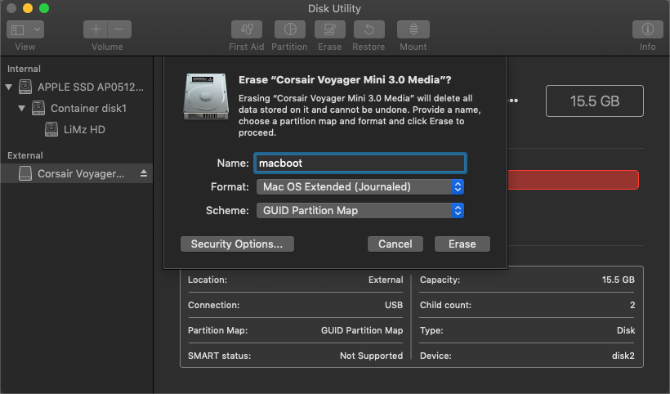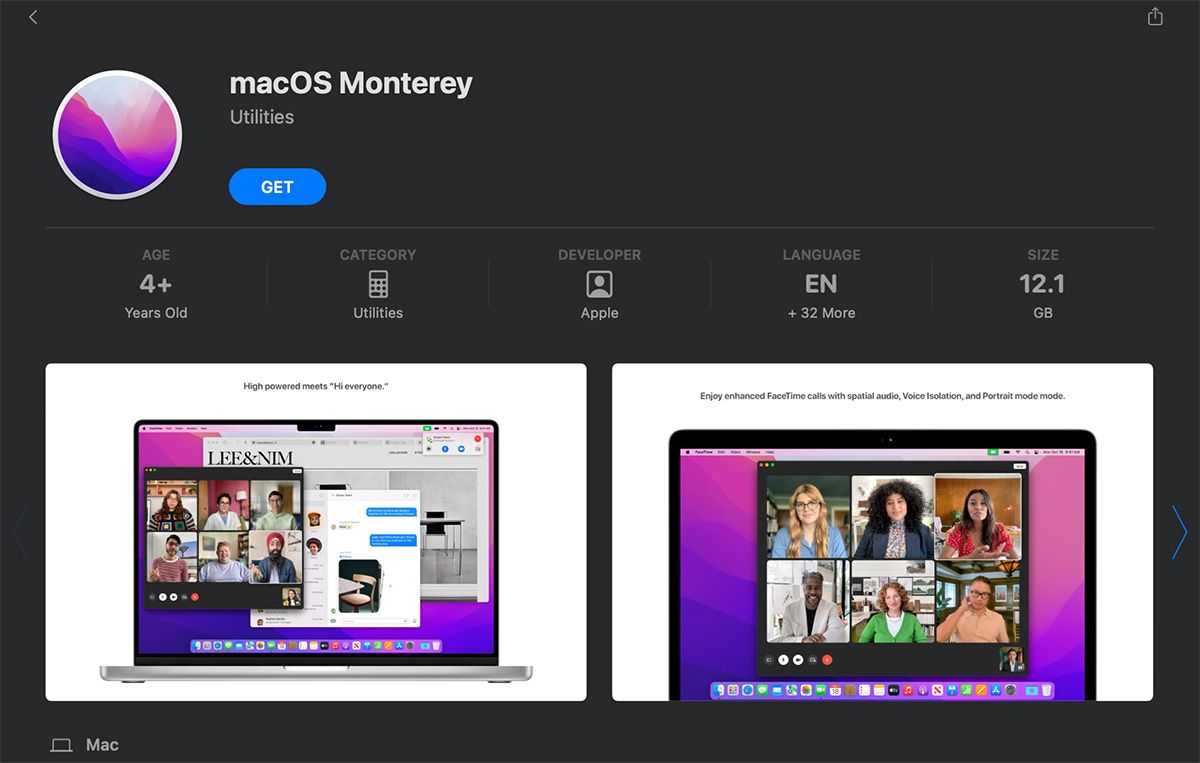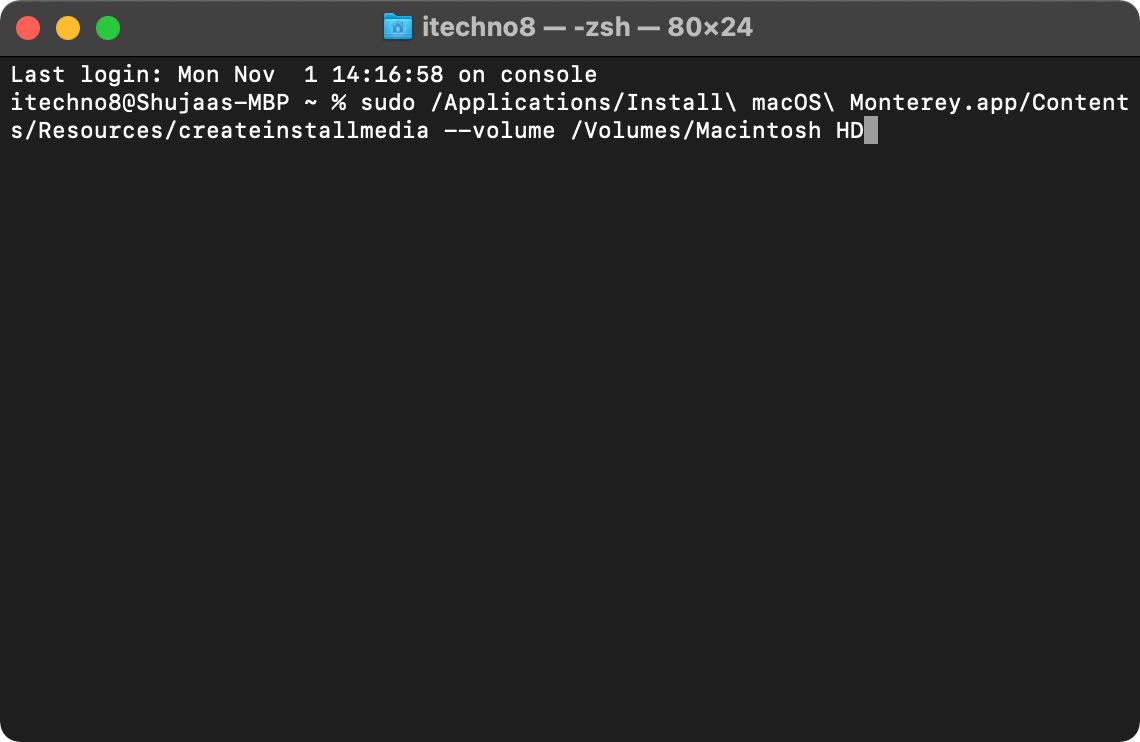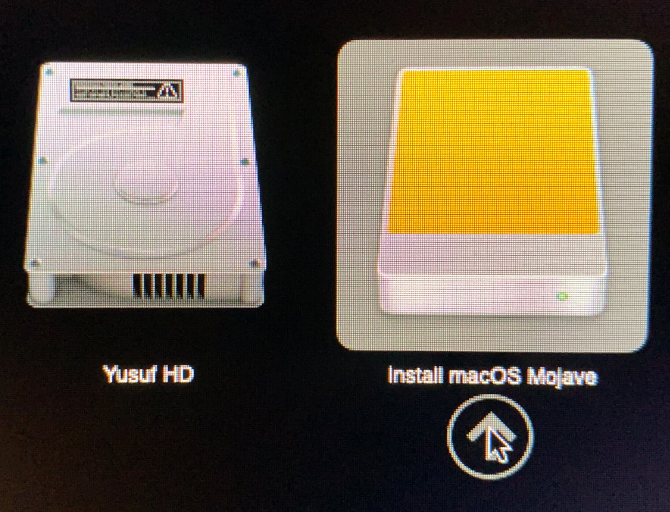Mac Os X Boot Disc Download
Equally you may know, you lot can reinstall macOS on your computer via the internet recovery method. But did you lot know that yous can also create a bootable USB bulldoze to install macOS from? This will let you boot your Mac from a unlike source if it won't work normally, and makes installs on multiple machines piece of cake.
Why Would Y'all Need to Install macOS From a USB?
Creating a bootable USB drive and using it to reinstall to macOS is a chip of a lengthier process equally opposed to simply updating macOS from the Software Update section of the System Preferences, just information technology has its benefits.
Creating a bootable USB deejay allows you to install or update macOS on multiple systems without having to download the installer on each Mac. This can save quite a flake of time, because the virtually versions of macOS accept an installer size of 12GB.
You tin can also employ the built-in recovery tools that come with the macOS installer to troubleshoot and gear up different kinds of issues. These include regaining admission to a Mac that refuses to boot or recover files that seem to be lost. Some other do good of using a bootable disk for a macOS installation is that you can perform a make clean install.
A clean install allows you to become rid of junk apps and files that may have accumulated over fourth dimension. This almost always results in a Mac running faster later a clean install, since macOS has started over with a clean slate.
Choosing a USB Flash Drive for Installing macOS
USB flash drives are cheaper than e'er, then you won't have to spend much on this job. However, make certain to buy a name-brand flash drive (like SanDisk, Kingston, or PNY) from a reputable store. Stay away from cheap drives with suspiciously high storage on sites similar eBay.
Those drives oftentimes have their firmware hacked to written report a faux size to your operating organisation. Not only will the transfer speeds be painfully slow, but using them may also result in loss of data or even a damaged USB port.

Also, cheque to see what ports you take on your Mac. Well-nigh of Apple'due south current MacBook models exclusively offering USB-C ports. Fortunately, there are a lot of USB-C drives available, or yous tin can utilize a USB-C to USB-A adapter.
It's best to go with a USB 3.0 bulldoze, with a minimum size of 16GB. The Samsung BAR Plus is a good overall value for the money; we've also rounded up all the fastest USB iii.0 drives you can buy for more options.
Formatting Your USB Flash Drive
You lot can only create a bootable installer for macOS on a Mac. If yous're using a flash bulldoze that already has data on it, brand sure to back up whatever important files now, equally you lot're going to erase everything in a moment.
Open Finder. Then navigate to Applications > Utilities, and open Disk Utility. You should see your flash bulldoze under the External section in the left pane. Later on selecting information technology, click on the Erase button forth the superlative.
Choose a friendly name (which you'll use after), and make sure to choose Mac Os Extended (Journaled) for the format. Finally, click Erase.

Downloading the macOS Installer
Apple has inverse the method for downloading versions of the operating arrangement of macOS. While the installers were previously available to download via the App Shop, newer versions (macOS Mojave and later) update the system from Organization Preferences.
To download the latest version of the macOS installer for installing on a USB, open up System Preferences and navigate to Software Update. You lot should run across the selection to download the installer here.
You can too use the App Shop to open up System Preferences and download the update. Open the App Shop and search for your version of macOS. Click on the View or Get button, which will open up Organisation Preferences to download the installer. If y'all're on a version of macOS from before Mojave, you can still download the installer directly from the App Shop.

In the case that you are already running the latest version of macOS, you might not come across the option to download the installer in System Preferences. In that case, use the App Store method detailed to a higher place. This will force Arrangement Preferences to download the installer, which yous can then use to create the bootable disk.
In either case, once the installer downloads and opens, quit it without continuing the installation.
Creating a Bootable USB Using Final
Terminal is the easiest way to create your bootable USB drive. Just supersede the MyVolume portion of the commands below with the name you gave your drive in the Disk Utility stride above.
Take notation that the commands differ slightly for creating bootable USBs for unlike versions of macOS. If you are going to create a bootable drive for macOS Monterey, apply the command beneath as it is. Otherwise, replace Monterey with the macOS version name (for example Mojave), etc.
To create a Monterey installer:
sudo /Applications/Install\ macOS\ Monterey.app/Contents/Resources/createinstallmedia --volume /Volumes/MyVolume
Copy and paste the command yous need to a higher place into your Terminal window and press the Render key. After entering your password, confirm you want to erase the USB drive by typing Y followed by Return.

Terminal volition now erase and create your bootable USB drive, set up for yous to kicking from.
Creating a Bootable Disk Using Software
If you prefer creating a bootable disk using the software method, you can use third-party applications to practise and so. Diskmaker X was the famous go-to utility for creating bootable disks, but it doesn't back up the latest versions of macOS (High Sierra onwards). Instead, you tin use the Install Disk Creator from MacDaddy for creating a bootable macOS installer.
Once you've downloaded the software, simply open information technology up. The app should automatically detect the macOS installer in your Downloads folder. Merely select the USB drive that you desire to create a bootable disk on from the top volume dropdown listing, and click on Create Installer.
Booting Your Mac From a USB Bulldoze
Now if y'all find yourself in a sticky situation where your Mac isn't booting, or yous want to do a fresh install of macOS, you take a solution. You tin can kick from your USB bulldoze and not have to download the macOS installer again. This volition come in handy for fixing the "macOS could non be installed" error.
There are 2 unlike methods to boot your Mac from a bootable USB, depending on which processor your Mac has.
Intel Macs
Simply plug your created USB bulldoze into an open USB port on your Mac. Power on the system, or restart it if information technology'southward already on, and immediately press and concord the Option (Alt) cardinal when it starts booting.
M1 Apple tree Silicon Macs
To boot an M1 or Apple silicon Mac using a bootable USB deejay, power on the system or restart it if it'south already on, and keep the Ability button pressed downwards.
Yous should at present see an pick to select your USB drive every bit a startup disk. Later selecting it, your system will boot off your USB drive and enter macOS Recovery with the macOS Monterey installer appearing on your screen. If you want to erase your deejay first to practice a make clean install, quit the installer and run Deejay Utility from the Recovery menu. You can then format the bulldoze, and and so go back to the Recovery menu and install macOS Monterey.

Some wireless keyboards may not piece of work at this indicate. If y'all're having difficulty, plug in a wired keyboard instead. If you don't encounter your USB drive as one of the startup options, endeavour a different USB port.
What to Practice if Your Mac Won't Boot Using a USB
In some cases, Intel Macs with a T2 bit (Intel Macs released subsequently 2018) may not allow yous to boot a macOS installer from an external bulldoze. This is due to a setting in the Security Startup Utility that needs to be adapted. This can exist done past following the steps explained below:
- Kicking into macOS Recovery by pressing Cmd + R while you turn on the Mac.
- A list of users will announced. Select and log in to the administrator's account.
- When the Mac has booted up, select the Utilities menu, and select Startup Security Utility.
- You may exist asked to authenticate again. Enter macOS password, choose an administrator account, and enter the password.
- In one case the app has launched, select the option to Allow booting from external media at the External Boot department at the bottom of the window.
- Quit the app and restart the Mac.
That's information technology! Y'all should now be able to normally boot from the external drive using the steps detailed in a higher place.
Using Your Bootable macOS USB
You can perform a fresh install of macOS, restore from a Fourth dimension Machine backup, or access tools like Disk Utility from the macOS Utilities screen. You tin can too use your USB drive to upgrade macOS to the latest version. If you need to troubleshoot your Mac without a network connection, this USB drive could exist a lifesaver.
Nosotros hope yous like the items we recommend and hash out! MUO has affiliate and sponsored partnerships, so we receive a share of the revenue from some of your purchases. This won't bear on the toll you pay and helps us offer the best product recommendations.
Nearly The Author
Mac Os X Boot Disc Download
Posted by: dixiecomposidand.blogspot.com
